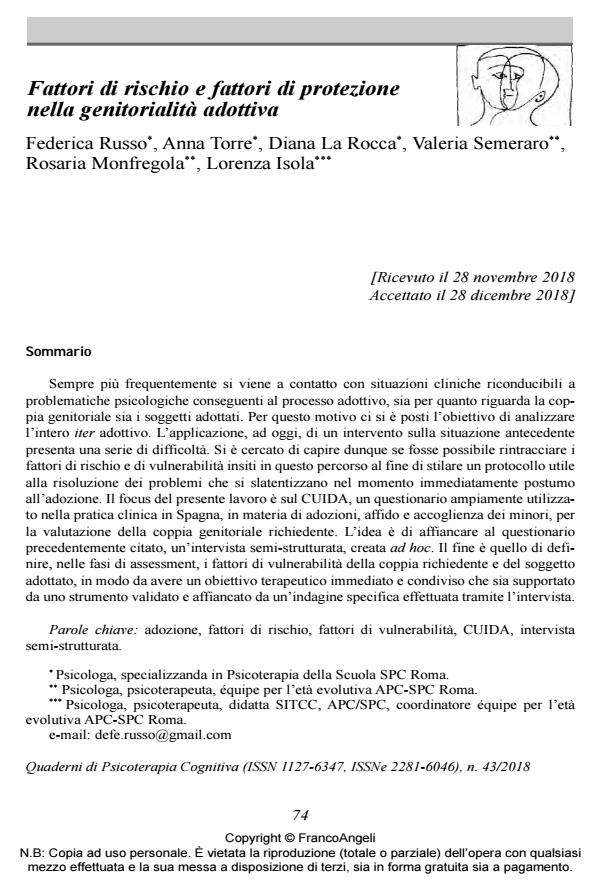Risk factors and protective factors in adoptive parents
Journal title QUADERNI DI PSICOTERAPIA COGNITIVA
Author/s Federica Russo, Anna Torre, Diana La Rocca, Valeria Semeraro, Rosaria Monfregola, Lorenza Isola
Publishing Year 2019 Issue 2018/43
Language Italian Pages 23 P. 74-96 File size 85 KB
DOI 10.3280/QPC2018-043005
DOI is like a bar code for intellectual property: to have more infomation
click here
Below, you can see the article first page
If you want to buy this article in PDF format, you can do it, following the instructions to buy download credits

FrancoAngeli is member of Publishers International Linking Association, Inc (PILA), a not-for-profit association which run the CrossRef service enabling links to and from online scholarly content.
In adoptive parents as well as in adopted children, it is always more frequent to observe clinical conditions related to psychological problems resulting from the adoption process. Therefore, this study aims to analyze the entire adoption process. A pre-adoption intervention encounters too many difficulties. Hence, the purpose of the study is to collect risk and vulnerabilities factors during the adoption process, in order to define a protocol for the resolution of problems which could become evident right after the adoption. The core of the study is the CUIDA, a questionnaire used in clinical practice in Spain. It evaluates the candidate parents regarding minors’ adoption, custody, and foster care. In addition to CUIDA, a semi-structured interview will be created to identify vulnerabilities factors of the candidate parents, as well as the adopted child, and used during the assessment. Thus, it will be possible to get an immediate and shared therapeutic target based on a validated instrument and supported by a focused interview evaluation.
Keywords: Adoption, risk factors, vulnerabilities, CUIDA, semi structured interview.
Federica Russo, Anna Torre, Diana La Rocca, Valeria Semeraro, Rosaria Monfregola, Lorenza Isola, Fattori di rischio e fattori di protezione nella genitorialità adottiva in "QUADERNI DI PSICOTERAPIA COGNITIVA" 43/2018, pp 74-96, DOI: 10.3280/QPC2018-043005